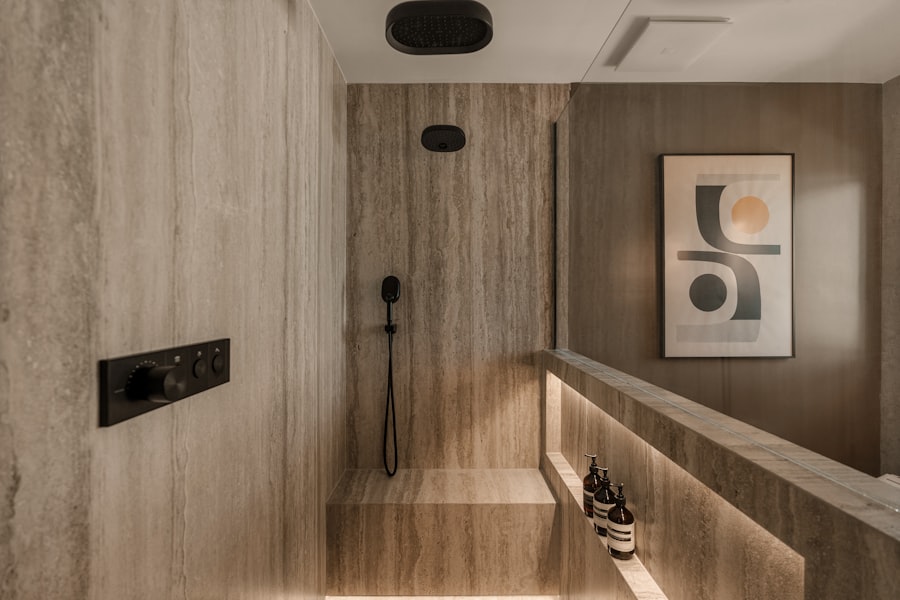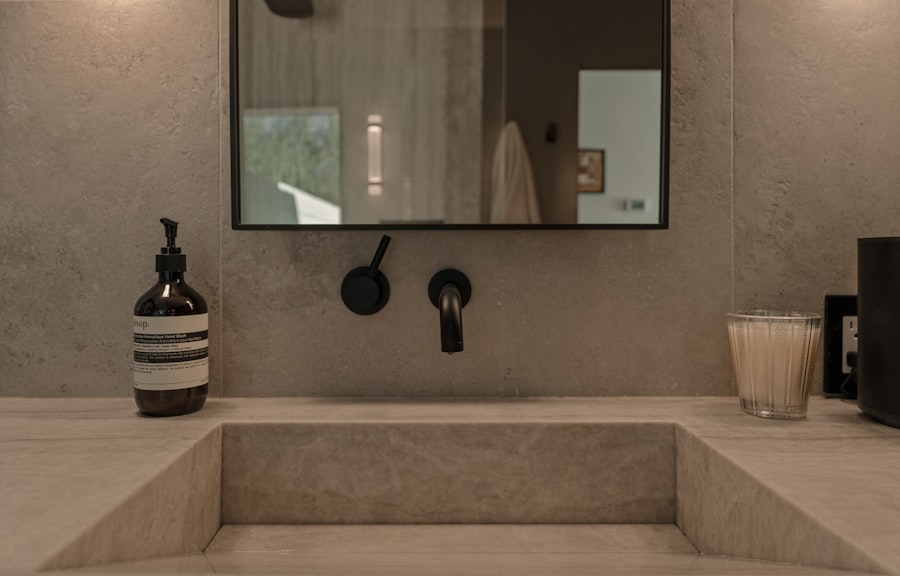Before embarking on a renovation project, it is crucial to have a clear understanding of your needs and objectives. This initial step serves as the foundation for the entire process, guiding decisions and ensuring that the final outcome aligns with your vision. Begin by assessing the areas of your home that require improvement.
Are you looking to enhance functionality, increase aesthetic appeal, or boost property value? Each of these goals may lead to different renovation strategies. For instance, if your primary aim is to create more space, you might consider an extension or a reconfiguration of existing layouts.
Conversely, if you are focused on aesthetics, a cosmetic update such as new paint, flooring, or fixtures may suffice. In addition to identifying specific areas for renovation, it is essential to prioritize your needs. This involves distinguishing between must-haves and nice-to-haves.
For example, if you are renovating a kitchen, essential upgrades might include new appliances and cabinetry, while decorative elements like backsplash tiles or lighting fixtures could be considered secondary. By establishing a hierarchy of needs, you can streamline the decision-making process and ensure that your budget is allocated effectively. Furthermore, engaging family members in this discussion can provide valuable insights and foster a sense of shared ownership in the project.
Key Takeaways
- Clearly define your renovation goals before starting the search for contractors.
- Research and compare multiple local renovation companies to find the best fit.
- Verify licenses, certifications, and read customer reviews to ensure credibility.
- Meet with contractors in person to discuss project details and expectations.
- Establish a realistic budget and plan thoroughly to ensure a smooth renovation process.
Researching Local Renovation Companies
Once you have a clear understanding of your renovation needs, the next step is to research local renovation companies. This phase is critical as the right contractor can significantly influence the success of your project. Start by compiling a list of potential companies in your area.
Online platforms such as Yelp, Angie’s List, and Google Reviews can provide a wealth of information about local contractors, including their specialties, customer ratings, and overall reputation. Additionally, social media platforms can offer insights into recent projects and client interactions, allowing you to gauge the company’s engagement with its clientele. Networking within your community can also yield valuable recommendations.
Speak with friends, family, or neighbors who have recently completed renovations; their firsthand experiences can guide you toward reputable contractors. Attend local home improvement shows or community events where contractors may showcase their work. This not only allows you to see their craftsmanship up close but also provides an opportunity to ask questions and gather information about their services.
As you compile your list, take note of each company’s specialties—some may focus on residential renovations while others might excel in commercial projects.
Comparing Renovation Quotes and Services

After narrowing down your list of potential contractors, the next step involves obtaining quotes and comparing the services offered by each company. It is advisable to request detailed estimates from at least three different contractors to ensure a comprehensive understanding of the market rates and service offerings. A well-structured quote should break down costs associated with labor, materials, permits, and any additional fees that may arise during the renovation process.
This transparency allows you to make informed comparisons between different contractors. When reviewing quotes, it is essential to consider not only the price but also the scope of services included. Some contractors may offer a full-service package that encompasses design consultation, project management, and post-renovation support, while others might provide a more limited service focused solely on construction.
Additionally, inquire about timelines; understanding how long each contractor anticipates the project will take can help you gauge their efficiency and reliability. Be wary of quotes that seem significantly lower than others; this could indicate a lack of experience or hidden costs that may arise later in the project.
Reading Reviews and Testimonials
| Metric | Description | Typical Value | Importance |
|---|---|---|---|
| Average Rating | The mean score given by customers in reviews, usually on a scale of 1 to 5 | 4.2 | High – Indicates overall customer satisfaction |
| Number of Reviews | Total count of customer reviews and testimonials received | 350 | Medium – Shows volume of feedback and social proof |
| Review Recency | Average age of the reviews in days | 30 days | High – Recent reviews are more relevant |
| Positive Review Percentage | Percentage of reviews rated 4 stars or higher | 78% | High – Reflects positive customer sentiment |
| Response Rate | Percentage of reviews that received a company response | 65% | Medium – Shows engagement with customers |
| Sentiment Score | Quantitative measure of overall sentiment derived from review text analysis | 0.75 (scale -1 to 1) | High – Provides insight beyond star ratings |
| Review Length | Average number of words per review | 45 words | Low – Longer reviews may provide more detail |
In today’s digital age, online reviews and testimonials serve as invaluable resources when selecting a renovation contractor. These reviews provide insights into the experiences of previous clients and can highlight both strengths and weaknesses of a company’s services. When reading reviews, pay attention to recurring themes—positive feedback about communication and professionalism can indicate a reliable contractor, while consistent complaints about delays or poor workmanship may raise red flags.
It is also beneficial to seek out testimonials on the contractor’s website or social media pages. Many companies showcase their best work through client stories or case studies that detail specific projects. These narratives often include before-and-after photos that illustrate the contractor’s capabilities and design aesthetic.
However, it is important to approach testimonials with a critical eye; consider looking for third-party review sites where clients have no incentive to provide positive feedback. This balanced approach will help you form a more comprehensive view of each contractor’s reputation.
Checking for Licenses and Certifications
Before finalizing your choice of contractor, it is imperative to verify their licenses and certifications. Most states require contractors to hold specific licenses to operate legally; these licenses often indicate that the contractor has met certain educational and professional standards. Checking for proper licensing not only ensures compliance with local regulations but also provides peace of mind that you are working with a qualified professional.
In addition to basic licensing, consider looking for additional certifications that demonstrate expertise in specific areas of renovation. For example, certifications from organizations such as the National Association of Home Builders (NAHB) or the National Kitchen & Bath Association (NKBA) can indicate a contractor’s commitment to ongoing education and adherence to industry best practices. Furthermore, insurance coverage is another critical aspect; ensure that your contractor carries liability insurance and workers’ compensation coverage to protect yourself from potential liabilities during the renovation process.
Meeting with Renovation Contractors

Once you have narrowed down your options based on research and reviews, it is time to meet with potential contractors in person. This meeting serves as an opportunity to discuss your renovation needs in detail and assess whether the contractor is a good fit for your project. Prepare a list of questions beforehand to ensure that all relevant topics are covered during the meeting.
Inquire about their experience with similar projects, their approach to project management, and how they handle unexpected challenges that may arise during renovations. During this meeting, pay attention not only to the contractor’s responses but also to their communication style and professionalism. A good contractor should be willing to listen to your ideas while also providing constructive feedback based on their expertise.
This collaborative approach is essential for fostering a positive working relationship throughout the renovation process. Additionally, ask for references from past clients; speaking directly with previous customers can provide further insights into the contractor’s reliability and quality of work.
Setting a Realistic Budget
Establishing a realistic budget is one of the most critical aspects of any renovation project. A well-defined budget not only helps manage expectations but also ensures that you allocate resources effectively throughout the renovation process. Begin by determining how much you are willing to spend on the project while considering potential financing options if necessary.
It is advisable to set aside an additional 10-20% of your budget as a contingency fund for unexpected expenses that may arise during construction. When creating your budget, break down costs into specific categories such as materials, labor, permits, and design fees. This detailed approach allows you to identify areas where you may be able to cut costs without compromising quality.
For instance, opting for mid-range materials instead of high-end finishes can significantly reduce expenses while still achieving an attractive result. Additionally, be transparent with your contractor about your budget constraints; this openness can foster collaboration in finding cost-effective solutions that meet your needs.
Planning for a Successful Renovation Process
A successful renovation process requires careful planning and organization from start to finish. Once you have selected a contractor and established a budget, work together to create a detailed timeline that outlines key milestones throughout the project. This timeline should include phases such as design approval, material selection, construction start dates, and completion deadlines.
Having a clear schedule helps keep everyone accountable and ensures that progress is made in a timely manner. Communication plays a vital role in ensuring a smooth renovation experience. Establish regular check-ins with your contractor to discuss progress updates and address any concerns that may arise during construction.
Additionally, be prepared for some level of disruption during the renovation process; living in a construction zone can be challenging, so consider making temporary arrangements if necessary. By maintaining open lines of communication and being proactive in addressing issues as they arise, you can navigate the complexities of renovation with greater ease and confidence. In conclusion, embarking on a home renovation journey requires careful consideration at every stage—from understanding your needs to selecting the right contractor and managing the budget effectively.
By following these steps diligently, homeowners can transform their spaces into functional and aesthetically pleasing environments that reflect their personal style while enhancing property value.




